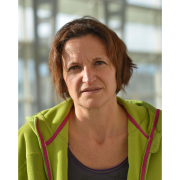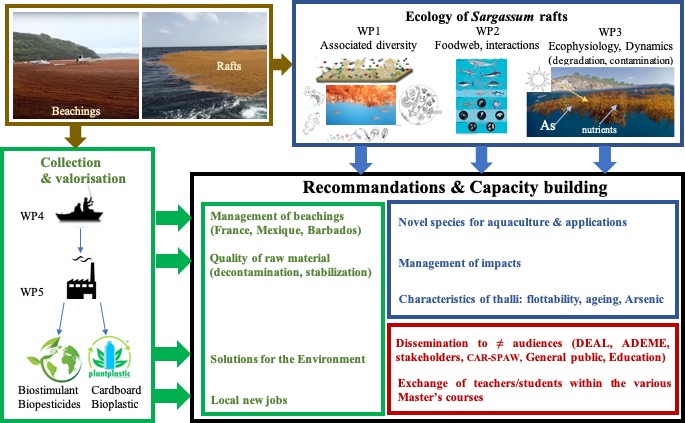
Copyright : Laboratoire LEMAR- 2018
Valérie STIGER-POUVREAU (LEMAR)
National
International
Start Date
30/03/2025
End Date
30/03/2025

The project brings together 14 partners from different Caribbean and metropolitan teams around the theme of massive sargassum strandings along the Caribbean coast. The various partners involved in the project are known to produce work of high scientific quality and have already been involved in fundamental and applied research projects aimed at understanding certain ecological and physiological processes and at enhancing the value of marine resources, in particular macroalgae. The partners are funded by various funding agencies:
.
– LEMAR – MIO – BOREA Caen : funded by the ANR
– BOREA-UA Guadeloupe: funded by the Région Guadeloupe
– L3MA-Martinique, BIODIVENV-Ifremer-Martinique: financed by the Territorial Community of Martinique
– CIRAD-Martinique, TMB-Martinique, EFINOR-Paimpol, ALGAIA-Saint Lô, LBCM-UBS, IRDL-UBS: funded by the ADEME
– the two foreign partners, CINVESTAV (Mexico) and UWI (Barbados) are self-funded as they are ineligible in the SARGASSES PAA 2019.
Human populations in the Caribbean region, have been suffering since 2011 from brown tides followed by significant sargassum strandings which have catastrophic consequences for benthic fauna and flora, for health and human activities. The objectives of the SAVE-C project are to obtain basic knowledge on the rafts and species of Sargassum, but also to change the perception of local populations towards massive strandings of Sargassum on coastal areas, transforming this nuisance into a valorization opportunity. This is a contribution to three themes of the SARGASSES 2019 PAA: Themes 1,3,4. The SAVE-C project will fill the knowledge gap on the ecological functioning of the shoreline raft and their threats in the Caribbean, but also propose a solution to turn stranding into socio-economic opportunities with a potential means to develop applications of the abundant macroalgal biomasses stranded on beaches.
Using a combination of field studies, ecological and physiological experiments and biotechnology the SAVE-C project will:

The project is broken down into 5 research actions (WPs).
Sargasso rafts from the “new Sargasso Sea” are an atypical habitat and knowledge of its ecology is virtually non-existent.
A fundamental issue is the maintenance of Sargassum thalli in pelagic life, as opposed to the majority of Sargassum species that are benthic.
Sargassum rafts and groundings represent a biomass to be valorised.
PI des différents partenaires:

 SELPHYC
Scroll to top
SELPHYC
Scroll to top